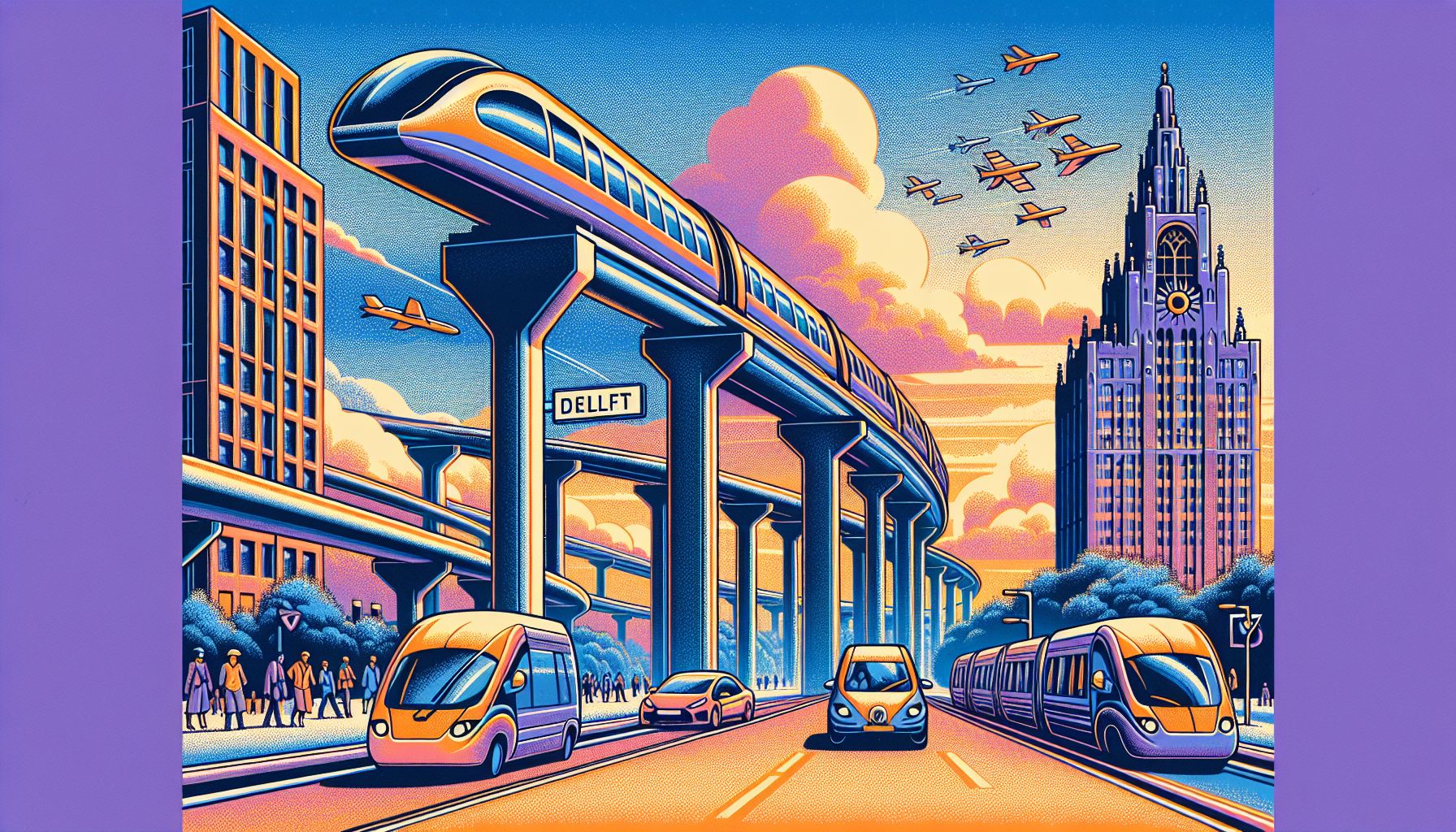Delft Students Achieve World-First Lane Switch in Hyperloop

The Delft Hyperloop team has successfully demonstrated a lane switch in their prototype, a crucial step toward realizing the sustainable high-speed transport system.
A Breakthrough in Sustainable Transportation
The lane switch innovation by the Delft Hyperloop team marks a significant advancement in the Hyperloop transportation system. This breakthrough is essential for the implementation of the Hyperloop, particularly in Europe, where the ability to switch lanes can facilitate the creation of an extensive and flexible high-speed transport network. The prototype, unveiled on the TU Delft campus, showcases the potential of Hyperloop technology to revolutionize travel by combining the speed of an airplane with the comfort of a train, capable of reaching speeds up to 1,000 km/h[1].
How the Lane Switch Works
The lane switch mechanism is designed to navigate the Hyperloop pod seamlessly from one track to another without moving track elements. This innovation relies on a balance of centrifugal forces and magnetic propulsion, which eliminates the need for physical switches that are common in traditional rail systems. The Hyperloop operates in a vacuum tube, minimizing air and rolling resistance, which allows for high-speed travel with reduced energy consumption. The implementation of this technology on a 42-meter test track has proven its feasibility and scalability, paving the way for more extensive tests and eventual passenger transport by 2030[2].
The Team Behind the Innovation
The Delft Hyperloop team consists of 39 students from TU Delft, led by team captain Cem Celikbas. These students have taken a gap year to focus on this ambitious project, aiming to push the boundaries of current transport technology. Their efforts have been supported by Bakker Magnetics, which provided the magnetic levitation devices essential for the Hyperloop’s operation. The team is also preparing to compete in the European Hyperloop Week 2024 in Zurich, where they will showcase their lane switch technology against over 20 other European teams[3].
Benefits and Future Prospects
The lane switch innovation is not just a technological feat; it represents a step toward a more sustainable and efficient transportation future. Hyperloop technology promises to reduce travel times significantly, with the potential to connect cities like Amsterdam and Paris in just 30 minutes. This system operates without fossil fuels, making it an environmentally friendly alternative to current modes of transport. The students predict that Hyperloop can increase global transport capacity by 150% by 2050, offering a solution to the growing demand for fast, efficient, and sustainable travel options[4].
Challenges and Next Steps
While the lane switch is a groundbreaking achievement, there are still challenges to overcome before the Hyperloop can become a mainstream mode of transportation. These include further testing, safety validations, and the construction of extensive vacuum tube networks. The Delft Hyperloop team is optimistic about these challenges, viewing them as opportunities to refine and enhance their technology. They are particularly focused on demonstrating the reliability and scalability of their system during the upcoming European Hyperloop Week, aiming for a successful trial that could lead to widespread adoption in the near future[5].
Bronnen
- www.metaalmagazine.nl
- bakkermagnetics.com
- research.tudelft.nl
- www.eurocircuits.com
- www.treinenweb.nl

